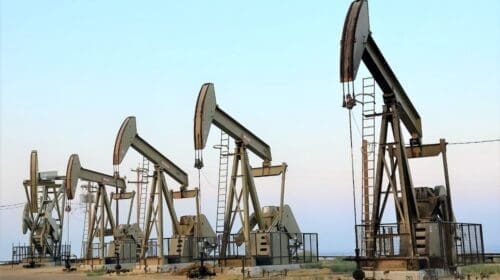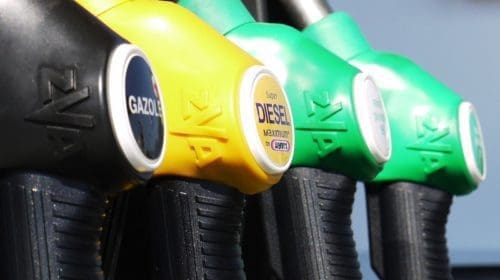While the opposition continues to mount against ConocoPhillips’ high-profile Willow project, the Alaska Department of Revenue revealed that anticipated payoffs to the state treasury will start by 2030. In the wake of turmoil and speculation, this current projection appears much more palatable than the original decade’s expectation. Willow could direct more money to the state than what is lost due to decreased production taxes in other areas of the North Slope.
The state revenue office made the original prediction in February of this year. It depicted a grim scenario where the reduced production taxes would initially influence the loss of $1 billion in revenue before billions in profits would flip the equation. According to Dan Stickel, chief economist for the revenue office’s tax division, and Owen Stephens, a commercial analyst, calculations now indicate that the state will break even instead of the books being in the red. Stephens points to a $1.3 billion positive influence over a decade. The latest analysis projects less than $400 million in pre-production negative impact on state funds.
“We still expect a modest reduction in state revenue during construction and a significant positive after, but peak production is pushed beyond the 10-year window,” said Stephens in the recent Senate Finance Committee hearing.
Having been widely criticized and blamed for gasoline price spikes endured after Russia invaded Ukraine, the Willow Project promises relief. Touted by supporters as an “economic lifeline for Indigenous communities” in Alaska, many environmentalists exercise contempt for the Biden administration as it approved the expense of climate goals that were essentially a pillar of his election campaign, including a push to wind and solar energy. Experts predict the Willow project will produce approximately 600 million barrels of oil during its lifetime. Also, peak daily production should arrive at 180,000 barrels early in the game.
The economic gains depicted in the latest analysis will realize significant returns for Alaska. Stephens and Stickel credit four influential factors. The first reign as production tax limitations found elsewhere across the North Slope and their ability to be displaced by the Willow project’s capital costs. This limitation results from a minimal tax rate found in Alaska’s system.
“We assumed in the original report that they could apply all their lease expenditures without bumping up against that minimum tax,” said Stickel. “The new analysis changes that assumption.”
With the new projection in oil prices, Stephens and Stickel identified a second factor of change in further analysis. The previous study released in February based pricing on estimates gathered in December last year. The latest research utilizes reduced pricing in the recently released spring revenue forecast. Stephens and Stickel indicated that reduced oil prices typically influence the rate producers potentially claim credits to combat production taxes.
While the third factor of influence is the recalculation of impacts made to corporate income tax receipts, the fourth comes from another recalculation instance. In addition to the February analysis predicting higher flow rates in the Trans Alaska Pipeline System, the Alpine and Kuparuk feeder pipelines found on the west side of the North Slope are now recognized to experience an increase as well. Increased oil volumes parallel reduction in the per-barrel costs of transportation that consequently impact tax receipts. These new calculations offer a resurgence in project support and economic confidence.
“I’m glad that the initial report was simplified,” said Senate Finance Committee co-chair Bert Stedman, R-Sitka, in his closing remarks at the hearing. “It caught our attention, so that made us invite you here to go into the details.”
Stedman acknowledged the possibility of more information to be gained from the new Willow analysis and oil development on the North Slope federal lands with Alaska’s inability to exercise an entitlement to royalty revenues.
“It definitely changes the dynamics of changing oil prices,” said Stedman.
The Willow project offers a peak into a current situation that, more often than not, receives a skewed representation. While emission control is a responsible necessity and additional forms of energy have their rightful place, the current oil and gas industry is critical to global survival. Fossil fuels are still needed to manufacture products, fuel vehicles, and heat homes, among other numerous needs. The Willow project approval only reinforces the notion that while many claim alternate energy to be the power solution of the future, fossil fuels still meet the needs of society today and will continue to have their place long term.
Nick Vaccaro is a freelance writer and photographer. In addition to providing technical writing services, he is an HSE consultant in the oil and gas industry with twelve years of experience. Vaccaro also contributes to SHALE Oil and Gas Business Magazine, American Oil and Gas Investor, Oil and Gas Investor, Energies Magazine and Louisiana Sportsman Magazine. He has a BA in photojournalism from Loyola University and resides in the New Orleans area. Vaccaro can be reached at 985-966-0957 or nav@vaccarogroupllc.com.
Oil and gas operations are commonly found in remote locations far from company headquarters. Now, it's possible to monitor pump operations, collate and analyze seismic data, and track employees around the world from almost anywhere. Whether employees are in the office or in the field, the internet and related applications enable a greater multidirectional flow of information – and control – than ever before.



















